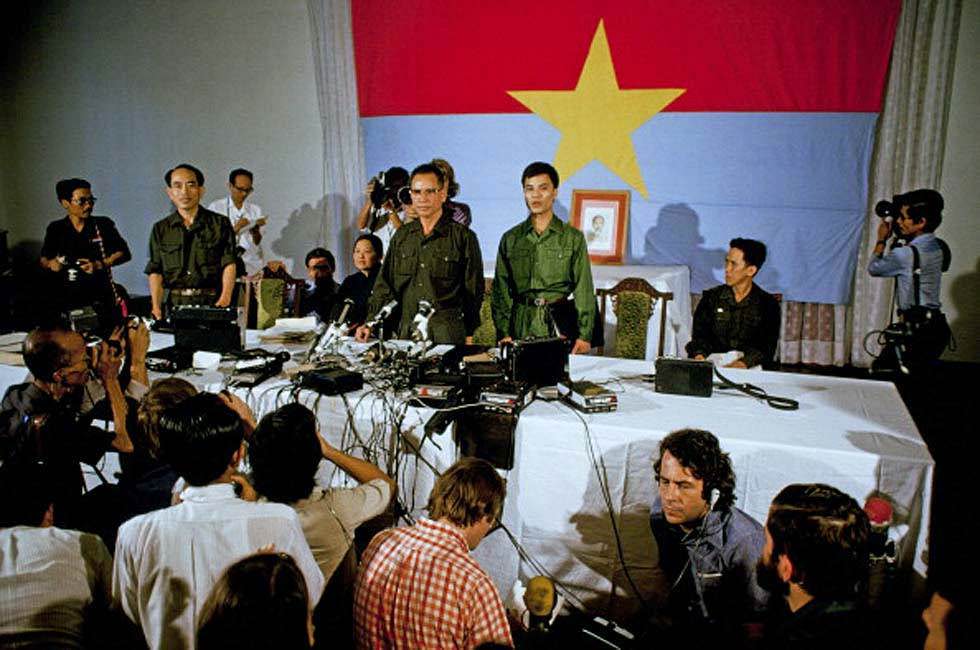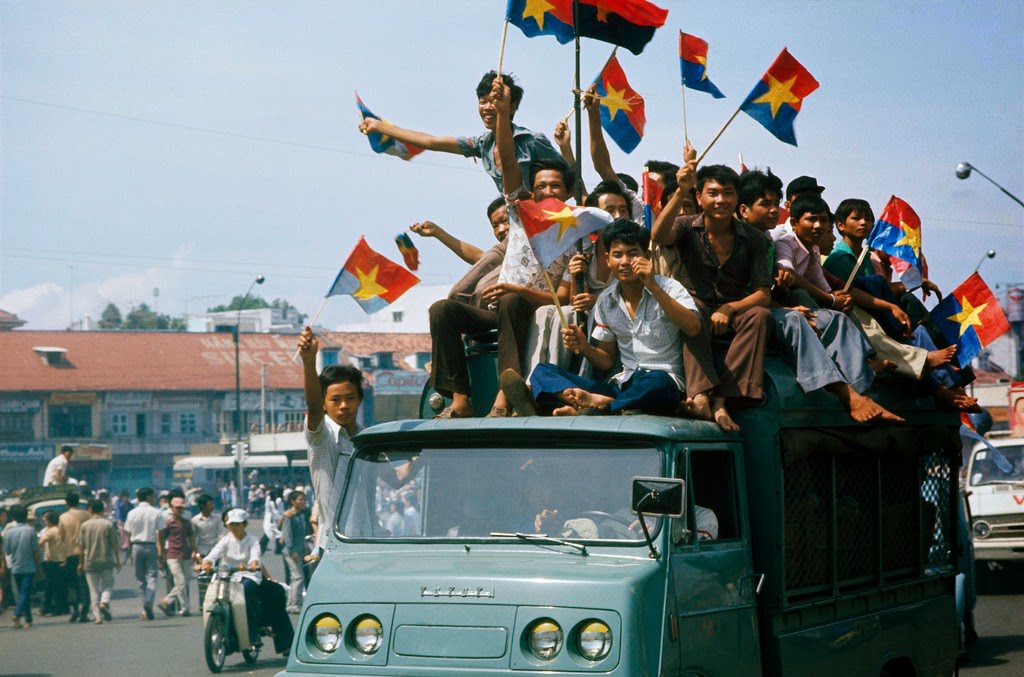On April 30, 1975, the People’s Army of Vietnam (PAVN) and the Viet Cong captured Saigon, the capital of South Vietnam. It marked the end of the Vietnam War and the beginning of the transition period to the formal reunification of Vietnam into the Socialist Republic of Vietnam. Under the rapid advance of the North Vietnamese, the South Vietnamese forces had crumbled. In December 1974, the North Vietnamese launched a major attack against the lightly defended province of Phuoc Long, located along the Cambodian border, overrunning the provincial capital at Phuoc Binh in January 1975. Despite previous presidential promises, the United States did nothing in response to such a situation. Gerald Ford, Nixon’s successor after Nixon’s resignation, was unable to persuade a hostile Congress to fulfil Nixon’s earlier promise to save Saigon from communist rule.
What led to the fall of Saigon
After signing the Paris Peace Accords in 1973, approximately 5,000 Americans remained in Vietnam, including diplomats, marine guards, contractors, and CIA employees. As a secret agreement, Nixon promised South Vietnam that the United States would “respond with all force” if North Vietnam violated the peace treaty. In March 1975, the North Vietnamese Army felt encouraged by Nixon’s resignation due to the Watergate scandal to launch a major offensive.
With little opposition and no American response, the North Vietnam Army was able to sweep south and capture Quang Tri and Hue following the decisive Battle of Ban Me Thuot. On March 29, Da Nang, the second-largest city in South Vietnam, fell. In a furious exodus, desperate residents clung to the rear staircase and landing gear of a World Airways plane and fell to their deaths. Following the news coverage of the incident, Gerald Ford confided to an aide, “It’s time to pull the plug. Vietnam is gone.”
When communist forces captured Xuan Loc on April 21, South Vietnamese President Nguyen Van Thieu resigned and fled the country while 150,000 enemy troops stood in Saigon’s footsteps. Congress rejected Ford’s request for $722 million for aid to South Vietnam.
The U.S. ambassador in South Vietnam refused repeated calls even to consider an evacuation, let alone conduct one. Martin, who had been ill for months, feared causing panic in the city and was committed to carrying out Nixon’s mandate to preserve the country’s existence.
Two U.S. Marines guarding the defence attaché’s office complex in Saigon were killed by North Vietnamese artillery shelling early on April 29. After surveying the damage to the airbase, Martin concluded it was time to leave Saigon. Still, with sea lanes blocked and commercial and military aircraft unable to land, the ambassador’s delays forced the United States into the option of the last resort-an an airlift by helicopter.
Operation Frequent Wind and the Last Helicopter
When the “White Christmas” signal was given to start Operation Frequent Wind, Americans and their Vietnamese allies gathered at pre-arranged locations to board buses and helicopters to the defence attaché office compound, where larger helicopters ferried them to U.S. Navy ships 40 miles away in the South China Sea. Approximately 5,000 people managed to flee the defence attaché office compound until enemy fire compelled them to use the American embassy as a last resort. While the plan called for just Americans to be evacuated, Martin requested that the Vietnamese government and military officials, and support workers be evacuated.
Marine guards faced the daunting task of choosing who would be saved and who would be left behind as 10,000 people converged outside the embassy’s gates. Helicopters landed on the embassy roof and in an adjacent parking lot at intervals of 10 minutes throughout the day and into the night.
Meanwhile, pilots from the South Vietnamese air force hijacked helicopters, placed their families on board, and landed on the decks of American ships. There were so many helicopters from South Vietnam that crews had to push helicopters into the sea to make room for others to land.
Ambassador Graham Martin repeatedly refused to leave his post to ensure as many people as possible were airlifted. Even with Ford’s wishes, the Americans could not take everyone in the embassy. At 3:30 a.m. Ford ordered Martin out of the embassy and stipulated that only Americans would be evacuated. Martin left the embassy after being handed the folded flag 90 minutes later.
Just after dawn on April 30, the last marines left the embassy, leaving hundreds of Vietnamese. With the helicopter carrying the marines, America’s presence in Vietnam vanished. Photographs of Vietnamese evacuees climbing up a rickety wooden staircase to a helicopter on a roof the previous day are often mistaken for the last helicopter to depart the American embassy. Over the course of fewer than 24 hours, some pilots flew continuously for 19 hours, evacuating 7,000 people, including 5,500 Vietnamese.
#1 American military Chinook helicopters April 1975 help in the evacuation of Saigon.
#2 South Vietnamese soldier. April 30, 1975.
#3 Taken of the presidential palace. North – Vietnamese officer holding a flag of the G.R.P. April 30, 1975.
#4 North Vietnamese troops are blindfolded and held under guard April 1975 in Saigon.
#5 The Vietcong cutting hair and “western” clothes.
#6 Vietcongs arriving in Saigon.
#7 The Fall Of Saigon In Vietnam On April 30, 1975
#8 Saigon ( Vietnam’s ) fall. Wreck of an airplane in a street. April 30, 1975.
#9 Vietnamese refugee family fleeing advancing North Vietnamese Communists try to push their laden scooter back onto Highway 1 outside Saigon
#10 Two Chinook helicopters hover above a road as they assist in evacuating supplies and soldiers of the South Vietnamese (ARVN) 18th Division and their families from Xuan Loc, Vietnam, mid April, 1975.
#11 Cemetery of Saigon, last South Vietnamese deads.
#12 As Saigon falls to the communist rule of North Vietnamese, reporters cover the story April, 1975 from a roof top.
#13 Crewmen of the amphibious cargo ship U.S.S. Durham (LKA-114) take Vietnamese refugees aboard from a small craft.
#14 The fall of Saigon to Communist North Vietnam April 30th
#15 Many try to flee by ground, air and sea with the help of American Soldiers, South Vietnam, April, 1975.
#16 South Vietnamese babies on a flight from Saigon to the USA (probably San Francisco) during Operation Babylift.
#17 A North Vietnamese tank rolls into a compound during the fall of Saigon, 1975.
#18 Vietnamese celebrate after the fall of Saigon, 30 Apr 1975.
#19 North Vietnamese troops enter Saigon on tanks and trucks, ending the Vietnam War.
#20 Female North Vietnamese troops enter Saigon carrying wooden rifles, red flags, and portrait of Ho Chi Minh. 30 Apr 1975, Saigon, South Vietnam
#21 Popular jubilation as North Vietnamese troops enter Saigon, 30 Apr 1975, Saigon, South Vietnam.
#22 North Vietnamese troops seize the presidential palace in Saigon.
#23 Female North Vietnamese troops enter Saigon in a jeep.
#24 During the Fall of Saigon, a boy on a jeep waves a transitional flag (used for 4 months in the middle of 1975) for South Vietnam, soon to reunite with the North.
#25 As Saigon falls to the communist rule of North Vietnamese, US Ambassador to Vietnam, Graham Martin, speaks to the press April 29, 1975 after an evacuation from South Vietnam.
#26 The Fall of Saigon, Vietnam in April, 1975 Spontaneous cheers at the communists’s arrival.
#27 The Vietnam war in April, 1975.
#28 The area surrounding the American Embassy just before the fall of the city in late April 1975.
#29 The wounded civilians at the hospital Grall.
#30 South Vietnamese clamber aboard barges in the port of Saigon in an attempt to escape from advancing North Vietnamese troops on the day of the Fall of Saigon that ended the Vietnam War
#31 A Vietnamese man prays in front of a portrait of Ho Chi Minh after the Fall of Saigon.
#32 Civilian evacuees board US Marine helicopter inside US Embassy compound to be helilifted to the US Seventh Fleet ahead of Communist troops about to enter Saigon on the last day of the Vietnam War, April 30th 1975
#33 The Fall of Saigon, Vietnam in April, 1975-Population fleeing on route.
#34 US civilians board helicopter inside the American Embassy compound in Saigon to escape advancing North Vietnamese about to capture Saigon.
#35 Civilian evacuees board US Marine helicopter inside US Embassy compound to be helilifted to the US Seventh Fleet ahead of Communist troops about to enter Saigon.
#36 Marines guard the evacuation of civilians at Tan Son Nhut airbase in Vietnam while under Viet Cong fire, during the fall of Saigon, on April 15, 1975
#37 Civilian evacuees board US Marine helicopter inside US Embassy compound to be helilifted to the US Seventh Fleet ahead of Communist troops about to enter Saigon.
#38 The Fall of Saigon, Vietnam in April, 1975 – President Thieu.
#39 Japan ESouth Vietnamese UH-1H being pushed overboard to make room for a Cessna O-1 landing.

Operation Frequent Wind, the final operation in Saigon, began April 29, 1975. During a nearly constant barrage of explosions, the Marines loaded American and Vietnamese civilians, who feared for their lives, onto helicopters that brought them to waiting aircraft carriers. The Navy vessels brought them to the Philippines and eventually to Camp Pendleton, Calif.









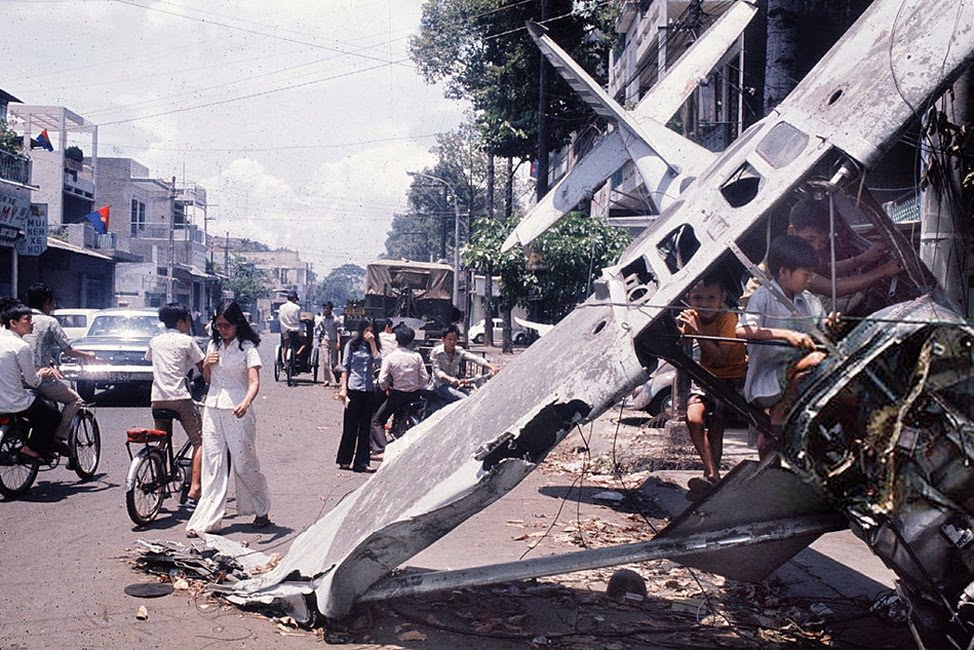





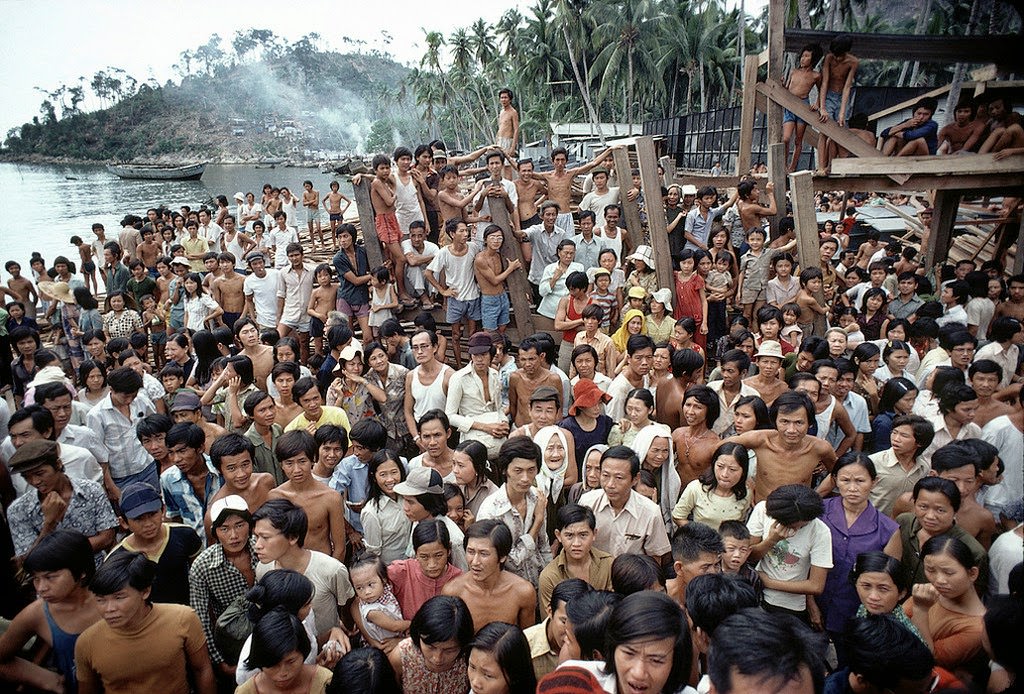

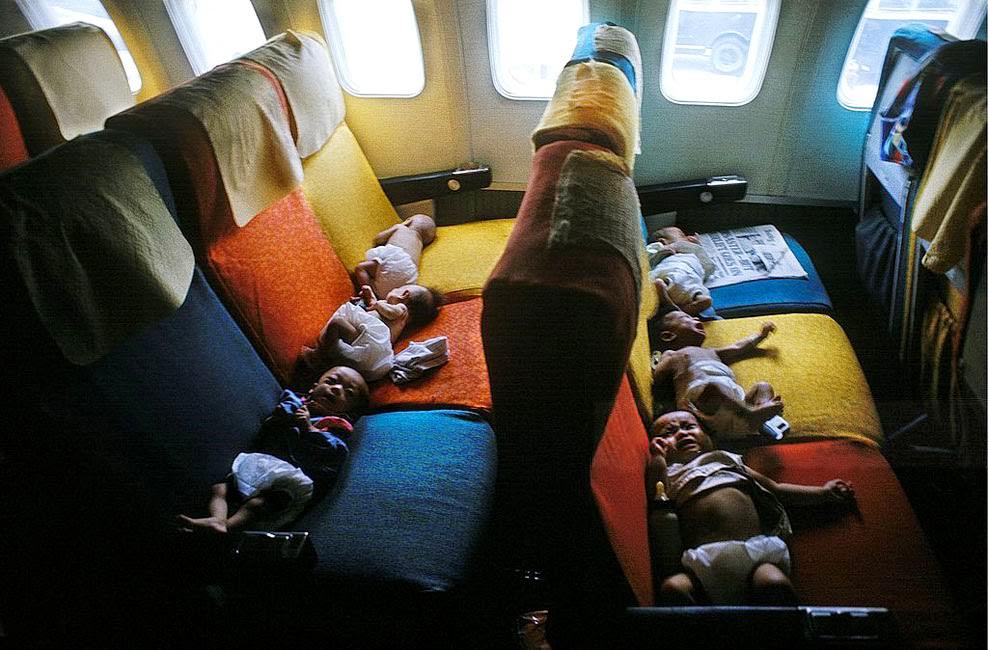








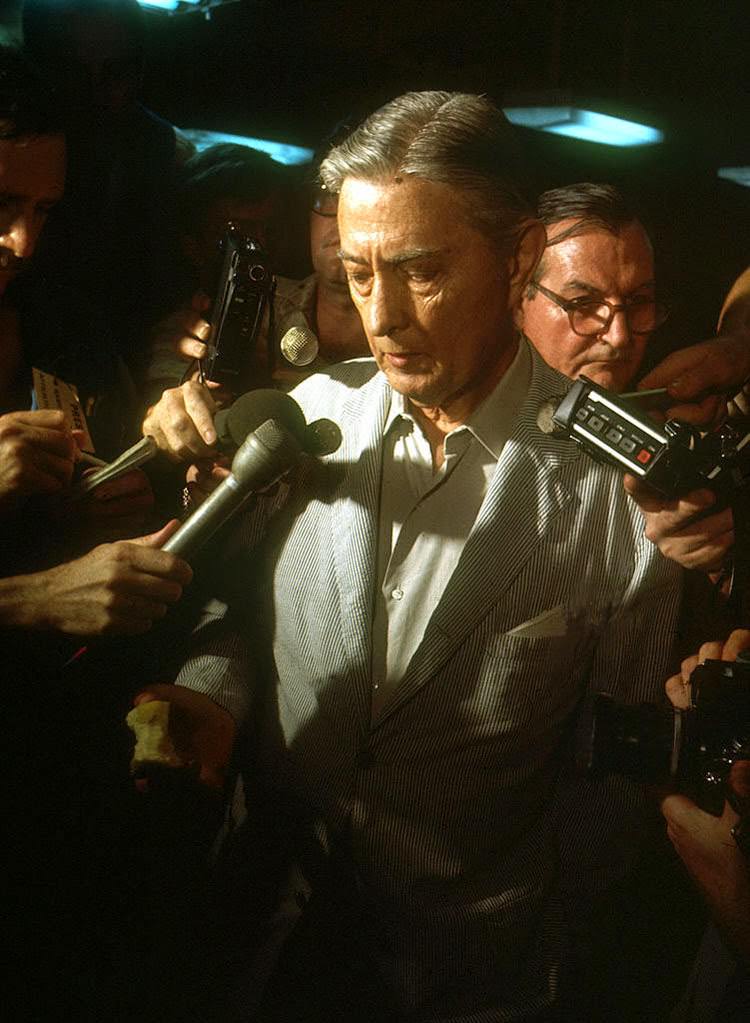














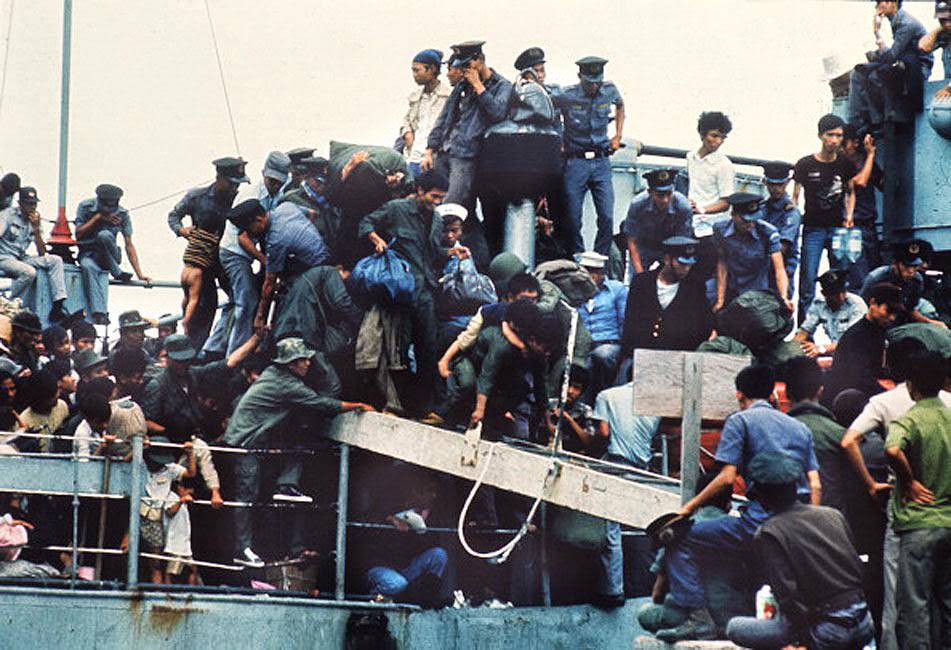
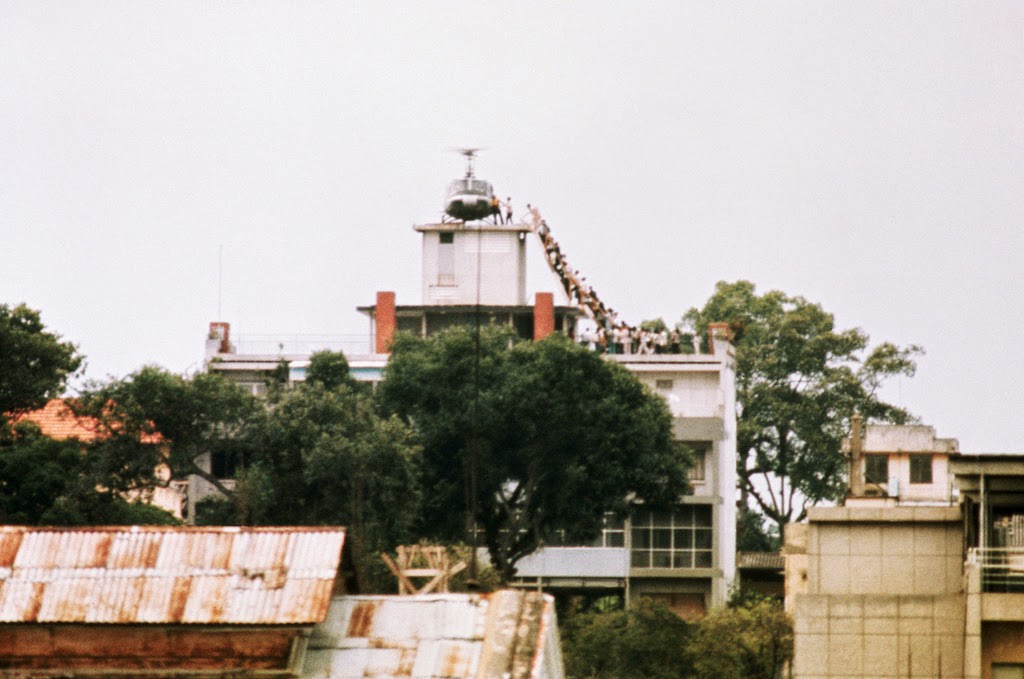





![South Vietnamese [sic] tank in flames as North Vietnamese forces enter Saigon.](https://www.bygonely.com/wp-content/uploads/2021/07/The_fall_of_Saigon_28.jpg)
